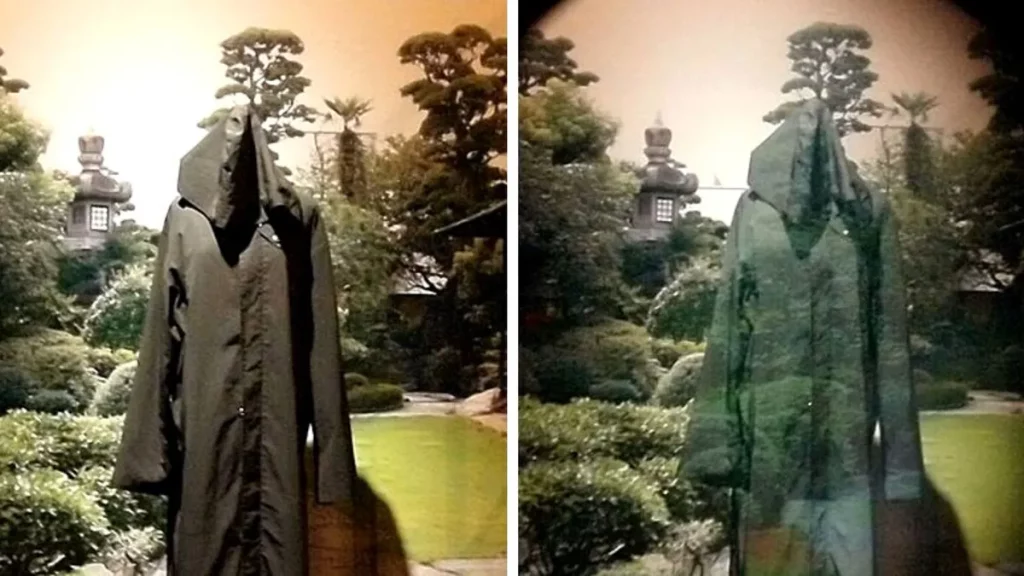If you read Harry Potter as a child, then you probably at one point wished you could have your very own cloak of invisibility like he had. While this may seem like something that could only exist in a fantasy novel, it turns out we’re much closer to achieving this than you think. Invisibility cloaks are not just possible, but are becoming reality.
Invisibility Cloaks Aren’t Just Fantasy Anymore
Scientists have already been working on invisibility cloaks for years, and they’ve actually had some success with the project. In the early 2000s, a team of researchers from the University of Tokyo created an optical camouflage system that makes anyone wearing a unique reflective material seem to disappear. The researchers used a special type of film that reflects light, making whoever is wearing it disappear. The material also has a patterned surface that makes the wearer’s outline appear distorted when seen through the system. (1)

More Progress
In 2006, a group of scientists from Duke University used metamaterials to create a simplified cloaking device that could hide objects from microwaves. The scientists used metamaterials to make the object being cloaked appear flat and two-dimensional, even though it was actually three-dimensional. They did this by applying voltages to layers of copper oxide that were sandwiched between two sheets of glass. This created an effect where microwaves seemed to pass through empty space where there were no objects at all. (2)
The scientists were able to cloak an object from microwaves, but only in a very narrow range of frequencies. This meant that the object would still be visible to other types of electromagnetic radiation, like infrared and visible light. The cloaking device was also fairly large and bulky compared to what we would expect for a real-world application. Ten years later, they created a seven-layer metamaterial cloak that should shield a small object from electromagnetic waves all the way up to the infrared waves of the spectrum.

This device was much smaller and more efficient than their previous design, but it still couldn’t completely hide an object from radar. It did, however, change the way that electromagnetic waves interacted with it, making it appear as if there were no objects in place at all.
Read: AI Just Flew an F-16 for 17 Hours. This Could Change Everything.
Hyperstealth Technology
In 2019, the Canadian company Hyperstealth Technology patented the technology for a “quantum stealth” invisibility cloak. Hyperstealth Technology is a privately owned firm specializing in creating camouflage systems for military forces worldwide. The company has been around since 1999 and has worked with militaries in Canada, Australia, and the United States. Their biggest claim to fame is their work on developing invisibility cloaks for soldiers using metamaterials. (3)
They have since been working with the UK-based company Vollebak to create a thermal camouflage jacket. The jacket is bulletproof, infused with copper to kill viruses, and is algae-based so that it will biodegrade. This is an important step towards an invisibility cloak.
“We’ve been thinking about invisibility ever since we started the company,” says Steve Tidball, cofounder of Vollebak. “We came out with some bold claims when we first started that we’re going to make clothes for the future. And many, many customers have written to us and said, ‘How about an invisibility cloak?’”
A Challenge
Developing this technology has certainly come with its challenges. Professor of 2D device materials at the University of Manchester and the National Graphene Center Coskun Cokabas, who is involved with the project, says that they initially underestimated the material challenges. After three years of hard work and determination, however, the prototype is ready.
“We have a multilayer graphene coating on the surface, and we intercollate ions between the graphene layers, similar to a lithium-ion battery,” says Kocabas.
They next pass a voltage through the layers by a computer program. This charges the ions within a liquid that sits between more than 100 layers of graphene that accumulate electrons. Next, that converts the graphene into a reflective material regarding infrared thermal radiation. Graphene’s conductivity allows it to control the optics of any garment covered in it by applying a voltage across it. This is what plays with the light, making the wearing appear “invisible.”
Still More Work To Do
Of course, plenty of work must be done before invisibility cloaks are readily available to the general public. For example, the current version of the cloak can only be worn for a few minutes before it has to be recharged by an external power source. The researchers also note that while they have proven that graphene can bend light around objects, they still need to work out how to make it do so in real-world conditions. Still, these are exciting developments that could have some pretty cool real-world applications in the future.
Keep Reading: Wireless Electricity Is Slowly Becoming a Reality
Sources
- “Invisibility Cloaks Are No Longer Just Science Fiction.” Interesting Engineering. Donovan Alexander. February 19, 2021.
- “Beyond Materials: From Invisibility Cloaks to Satellite Communications.” Duke. Ken Kingery. March 25, 2018.
- “This Company Says It’s One Step Closer to an Invisibility Cloak.” Wired. Chris Stokel- Walker. September 26, 2022.

